CHALLENGE OF THE WEEK, MONTH, YEAR
Hand washing (Open 6 steps for hand washing) Print, laminate and display near the area where children wash their hands.
CIRCLE TIME
We suggests an imaginary game to begin each day. (Open thematic letter-Human Body) Print the letter and insert it in an envelope. Place the envelope in an easy to find place in the daycare. During circle time, have the children find the letter and read portions of the interactive story to them. Follow the instructions.
SUGGESTIONS FOR DISCUSSION PERIODS
Speak of the different body parts and their functions. Observe people in books. Guide children to compare the height and weight of different people. Make various observations in regards to the children in the group. Who is the tallest? Who is the shortest? Which child represents the average size? Weigh and measure each child. Make a mark on the wall to indicate each of their heights. Compare marks with the children. If you prefer, use the growth chart available in the educatall club. (Open - Growth Chart) Observe the color of children's hair, skin, and eyes. Speak of healthy habits we must have to take good care of our bodies: bathe or shower, brush our teeth, trim our nails, eat well, get enough sleep...
AREA SETUP
A series of posters is provided to help you teach children the names of body parts.
(Open poster human body) Print and display.
(Open poster right hand/left hand) Print and display.
(Open poster skeleton) Print and display.
(Open picture game-human body) Print. Paste on large pieces of colored cardboard along with other pictures of body parts. Display on the wall.
PICTURE GAMES
The pictures may be used as a memory game or to spark a conversation with the group. Use them to decorate the daycare or a specific thematic corner. (Open picture game-human body) Print, laminate, and store in a "Ziploc" bag or in your thematic bins.
ACTIVITY SHEET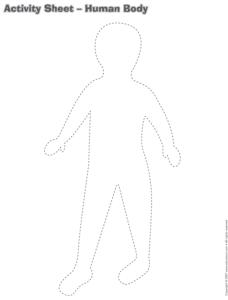
Activity sheets are suggested for each theme. Print and follow instructions. (Open activity sheet - human body)
VARIOUS WORKSHOPS
Have fun with these great workshop ideas provided by Caroline Allard.
Construction or building blocks:
- Use Lego blocks to build a hospital, a medical clinic, or another building
- Emergency vehicles such as ambulances, police cars...
- Figurines of all kinds with moving arms, legs, and heads
- Tongue depressors or popsicle sticks to build cabins
Arts & Crafts:
- Tempera paint for painting with various body parts: hands, feet, nose, elbows, fingers, etc.
- Cut out various body parts and glue on paper to recreate a body. This can be done on cardboard and made into a moving character by attaching fasteners to the joints.
- A collective mural with plenty of characters to assemble
- Modeling material to form a hand or foot which can be painted once hardened
- Paint with cotton balls
- Cotton balls glued to form the shape of a person or image, children take their pick
- An eyedropper and paint to experiment on different kinds of paper, cardboard, etc.
- Large sheets of white paper to trace the contour of children's bodies. Color.
Drawing:
- Coloring pages representing body parts or people
Role Play:
- Organize a hospital area with white shirts, hats, stethoscopes, tongue depressors, shower caps (to cover surgeon's hair), masks, paper slippers (or simply old slippers), nightgowns, empty medicine bottles, various bandages, doctor's kit, notepad for prescriptions, notebook to schedule appointments, pencils, thermometer, dolls, cotton balls, telephone, hot-water bottle, small flashlight, vinyl gloves, syringes, eyedropper, x-rays, empty containers of all kinds, chairs and tables for the waiting room, posters representing children or medical instruments, magazines, a game table for children who have appointments
- Conceive an optometrist area with a piece of cardboard with black letters (optometrist chart), glasses of all kinds (optometrists may be able to provide old frames), flashlight, pictures of eyes, a spoon to hide one eye at a time, small pictures to identify, a mirror, a table, long chair for the eye exam, etc.
Manipulation:
- Memory game with human body cards (Open memory game-human body)
- Puzzles with pictures of people, doctor's office, dentist, body parts, etc.
- Modeling clay to form various body parts
- A stethoscope and other medical instruments
- Association games with body parts: a hand associated with a specific action, a foot associated with a specific action, etc.
- Many pictures: characters to assemble, sequential stories, etc.
- Plastic skeleton
- Counting bandages. Boxes indicate the number of bandages they are to contain. Children place the correct
- number in each box.
- Various thermometers can be observed and manipulated. Children find differences and similarities
Pre-reading:
- Books about skeletons, the human body, health-related professions
- Human body picture book
Pre-writing:
- Tracing body parts
- Small tracing games or mazes
- Different activity sheets about the human body
- Games with educatall word flashcards
Motor Skills:
- Obstacle course. Children must move with something on their head, one hand in the air, or on one foot
- Aerobic exercise session
- Small weights for a weight lifting session
- Growth chart to measure children and a scale to weigh them
Science:
- Eyedropper, food coloring, and coffee filters to observe color mixing
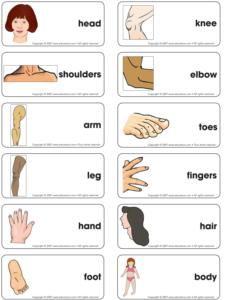
- Juice extractor and different kinds of fruits and vegetables to make healthy drinks
WORD FLASHCARDS
The flashcards may be used during circle time to spark a conversation or in your reading and writing area. They may also be used to identify your thematic bins. (Open word flashcards-human body) Head, shoulders, arm, leg, hand, foot, knee, elbow, toes, fingers, hair, body
PHYSICAL ACTIVITY AND MOTOR SKILLS
My body moves
Prepare a workout session in which children must identify different body parts. Follow with a relaxation period. Name the body parts children must relax.
My heart beats
(Open picture - heart) Explain that our heart is our motor. Children jump to the sound of rhythmic music. They pair up and listen to each other's hearts. Have them realize that the more they move, the faster their hearts beat. This is why periods of calm play are so important following energetic activities. Their hearts need to rest!
Boogie Woogie
Play rhythmic music. Children dance to the sound of the music moving all their body parts. Variation: Children play musical instruments with their hands, their feet...
I am strong
Children carry as many objects as possible in their arms from one designated area to another.
My lungs are strong
(Open picture - lungs) Blow in water or on balls of paper with straws.
Finger puppet
Draw eyes, a nose, and a mouth on one of each child's fingers. They will enjoy creating puppet shows with their finger puppets.
The germ
Children gather in groups of two or three. They determine who will pretend to be the germ. Following your signal, the other children wrap the germ in toilet paper until the music stops. The team who has best wrapped their germ wins.
OUTDOOR ACTIVITIES
Outdoor obstacle course
Jump, run, and roll around in the grass. Throw and catch a ball in various ways. Attempt to walk with a ball on top of your head or on your nose. Throw a ball into baskets. Move about with a ball between your legs. Roll on a ball. Jump over hoops or go through them. Try to turn a hoola hoop around your hips. Place hoola hoops on the ground for children to jump in. Leave exercise mats on the ground for children to practice somersaults, rolls, headstands, pedaling...
Body makeup
Enjoy body makeup using makeup pencils or water paint.
ACTIVITY IMPLICATING PARENTS
Have parents bring pictures or souvenirs of their child at birth (ex. Small clothing, pacifier, etc.)
COGNITIVE ACTIVITIES
Imitating grown-ups
Identify a child to be the leader. The child mimes various grown-up activities and the other children imitate his movements.
Felt board
Use four pieces of black felt. Glue them onto a large piece of cardboard and hang it on the wall. Next, (Open human body parts) print and cut the shapes out of colorful felt. The shapes will stick to the black felt board. Children will enjoy assembling the different body parts to create characters of various sizes.
I am thinking of...
Say, "I am thinking of a friend who has_________." Describe a specific characteristic pertaining to a child such as hair color or a certain piece of clothing. The child who identifies the correct friend becomes the leader of the game.
Searching with a fine-tooth comb
Show children a variety of objects used for daily hygiene (facecloth, comb, brush, toothbrush, etc.). Hide all of them. Following your signal, children must search for the objects and gather as many as possible.
Colorful feet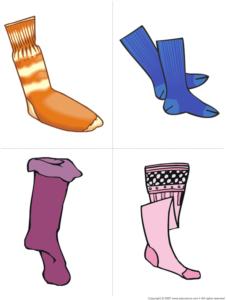
(Open colored socks) Print the socks. Distribute one sock to each child. Make sure two children have blue socks, two have red socks, two have yellow socks, and so on. Give children instructions according to the color of their socks (ex. Red socks meow like cats, yellow socks jump like frogs, etc.)
I can dress myself
(Open I can dress myself) Print and laminate. Leave this chart at children's disposal. They can practice dressing and undressing dolls.
Human puzzle
(Open geometric shapes) Print and laminate. Provide children with the various shapes and ask them to create a character with them.
Eating well
(Open game - I eat well) Print the cards. You can laminate the cards or place them in a "ziploc" bag to protect them. Place the cards face down on the ground. Give each child a paper plate. The object of the game is to create a healthy meal. Children turn a card one at a time. If they find an element of a food group they do not have, they place it in their plate. If they already have an element from the same food group, they put the card back, face down on the floor and it is the next child's turn. The first player to have a complete meal in his plate wins. Variation: You can add unhealthy food cards and players must skip a turn when they pick such a card.
Hunt and seek-Personal hygiene
(Open hunt and seek - personal hygiene) Print and laminate. Children pick cards and find the elements in the picture.
Mirror game
Provide children with unbreakable mirrors. Have them observe themselves and notice the differences between them and the other children. Variation: Children find partners and imitate everything their partner does.
The giant
Ask children to build people with building blocks. Request they build people with long legs and long arms or short legs and short arms...
Human sounds
Record sounds like a beating heart, hands clapping, a mouth kissing, or footsteps, etc. Ask children to identify the body part which produces each sound.
SOCIAL AND MORAL ACTIVITIES
I am you and you are me
For this activity, group children two by two. One executes movements and the other must imitate and vice versa.
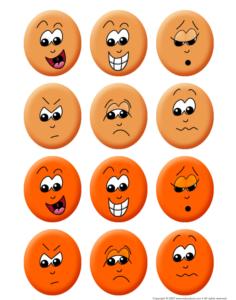 My emotions
My emotions
Use pictures which represent facial expressions. (Open emotions characters) Laminate to make cards. Children choose a card which represents their mood and explain their choice. The pictures may also be hung on the walls of the daycare for children to observe throughout the day. Doing so will allow them to refer to them when a difficult situation occurs and be able to name their emotions. Many variations and activities may originate from these pictures. A great example is a mime game. Use your imagination!
What big feet you have!
Sit in a circle with the children. Have them remove their shoes. Ask them to compare the sizes of their shoes. Find the smallest pair, and then the biggest pair. Organize a matching activity, the youngest with the oldest.
Reconstruction
In small groups of two or three, children outline a friend's body with building blocks. Use a variety of blocks.
A self-portrait
Print the outline of a face for each child. (Open face outline) Using a mirror they reproduce the image they see. Have them present their self-portraits to the group.
CULINARY ACTIVITIES
The tongue
Children are blindfolded. Have them taste a variety of foods and attempt to guess what they are eating. Repeat the game having them smell the foods instead.
Mr. Potato Head
Use an uncooked potato and decorate it with eyes, nose, and a mouth. Do the same with fruit.
I smell with my nose
Present a variety of spices. Have children smell them and describe each scent.
My hands are having fun
Prepare a recipe of modeling clay with the children. Have them kneed the dough.
SCIENTIFIC ACTIVITIES
Organize a science area complete with a microscope and a magnifying glass. Use these tools to study body parts such as nails, hair, fingers, etc.
ARTS & CRAFTS
My scrapbook
(Open scrapbook) Print several copies of each page. Children color them. Photograph children and add a picture to each of their scrapbooks. Add personalized comments too. Glue the cover page to a piece of cardstock and join the pages together with ribbon or insert the pages into a binder.
Additional scrapbook pages
Print the measurements scrapbook page. Measure and weigh the children. Complete the information and add to the scrapbooks. (Open scrapbook measurements)
Handprints and Footprints
(Open handprints and footprints) Print for each child. Make prints using washable ink or paint. Add to the scrapbook.
Right hand, left hand
Begin by showing children they have a left hand and a right hand. Explain that they are to draw a picture first with one hand, and then the other. Use two different papers and inscribe which hand was used to draw each picture. You may prefer to draw a line on a single paper dividing it into two sections and inscribing which hand was used to draw in each section.
Painting with your back turned
Hang a large piece of paper on the wall for children to paint on. Have them paint facing away from the paper. They must hold their paintbrushes in their hands and paint without looking at their work.
Painting with your feet
Children attempt to paint with their feet. Holding the paintbrushes between their toes, they can produce a masterpiece.
My comb
(Open faces, arms, legs) Print. Purchase a bag of large combs. Present the children with all the material and have them create a character which can be used for a puppet show.
My skeleton moves
(Open skeleton mobile) Print the skeleton parts. Children glue the pieces onto construction paper before cutting them out. Use fasteners to tie the joints together so the skeleton can move its arms, legs, and head.
Create an impression
Make impressions of various body parts. Have children compare their impressions: color, size, etc.
Mix and match
Provide catalogues and magazines. Children cut out heads, bodies, and legs.....Have them create people.
Finger painting
Use tactile paper and finger paint. Allow children to create freely.
Body drawing
Children attempt to draw with unusual body parts such as toes, knees, elbows...
My silhouette
Use large pieces of paper and have children lie down on them. Trace the contour of their bodies. Cut out the shapes and hang them on the wall. Children decorate their silhouettes as they wish (markers, wooden pencils, fabric, etc.).
COLORING PAGES
(Open coloring pages theme - human body)
SONGS & RHYMES
Head, Shoulders, Knees and Toes
Head, Shoulders, Knees and toes
Knees and toes
Head, shoulders, knees and toes
Knees and toes
And eyes and ears and mouth
And nose
Head, shoulders, knees and toes
Knees and toes
If you're happy and you know it
If you're happy and you know it
Clap your hands
If you're happy and you know it
Clap your hands
If you're happy and you know it
And you really want to show it
If you're happy and you know it
Clap your hands
Repeat with:
Stomp your feet
Blink your eyes
Shrug your shoulders
Wiggle your fingers
Shake your head
Have fun!
The Educatall team
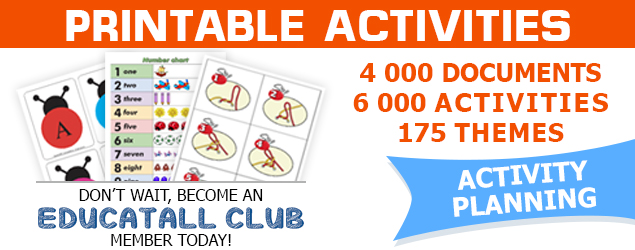
 Home
Home Theme activities
Theme activities
 Babies and toddlers
Babies and toddlers
 Arts and crafts
Arts and crafts
 Science
Science
 Creative recipes
Creative recipes
 Tips and tricks
Tips and tricks
 Special needs
Special needs
 Extra activities
Extra activities
 Educ-TV
Educ-TV
 Newsletter
Newsletter  Online store
Online store Educatall club
Educatall club

